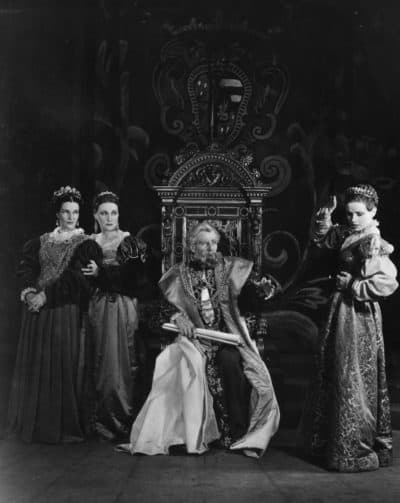April 30, 2020
https://www.wbur.org/hereandnow/2020/04/06/shakespeare-plague-coronavirus
Waves of the bubonic plague killed at least a third of the European population across centuries. A year or so before Shakespeare wrote “Romeo and Juliet,” a powerful plague struck London in 1593.
Theatres closed for 14 months and 10,000 Londoners died, says Columbia University professor and author James Shapiro. In “Romeo and Juliet,” Shakespeare uses the plague as source material.
The play features a scene where Friar John is sent to deliver the message to Romeo about Juliet’s faux death. But the Friar is suspected of being in an infected house and quarantined — making him unable to deliver the message to Romeo.
“That would have been lived experiences for Londoners just coming out of what I hope we'll be coming out of quite soon, but a far more lethal pandemic” than the coronavirus, he says.
This use of the plague is “terrifying” in part because Shakespeare and his fellow playwrights seldom wrote about the subject, Shapiro says.
Now, he predicts artists will write about this pandemic in their diaries and it will take time before people want to go see movies about pandemics again.
“People died in all kinds of ways in Shakespeare's plays. Nobody ever dies of plague. It's just taboo,” he says. “So the few times that he does mention plague, mostly in his tragedies, it hits with incredible force.”
In the early 1600s, more bubonic plague outbreaks struck and shuttered the doors of London’s Globe Theatre. A 1603 outbreak killed over a fifth of Shakespeare’s fellow Londoners and the plague returned again in 1610, he says.
During and after the worst outbreaks of his lifetime, Shakespeare wrote some of his greatest works: “King Lear,” “Macbeth,” “Antony and Cleopatra,” “Coriolanus” and “Timon of Athens."
“These plays really bear the mark of living through such a terrible experience,” he says. “And it may well be that his move toward writing tragedy at this time is a kind of response to the tragedy that his society was experiencing in these years.”

In “King Lear,” the title character mentions the plague when cursing his eldest daughter, Shapiro says.
The character King Lear is changed throughout the course of the play. In the end, the ruler acknowledges the suffering of his people and that he hasn’t done enough to take care of them, he says.
“It may be too much to hope that our national leaders and international leaders right now may have a similar response: feel that they, too, have taken too little care of the social problems that are under the magnifying glass right now,” he says.
What strikes Shapiro about Shakespeare and the bubonic plague is the playwright never fled London. He stayed in the city because he understood his job as an artist was to help people come out of difficult periods when the theaters reopened, Shapiro says.
Despite the uncertainty in the theater world right now, Shapiro is sure Shakespeare will still be there when the crisis ends — like he stuck around for the people of London during his lifetime.
“His works were there to give them comfort and clarity,” he says. “I do know that when we come out on the other side of this, we're going to need theater and we're going to need Shakespeare — and it'll be there for us.”
No comments:
Post a Comment